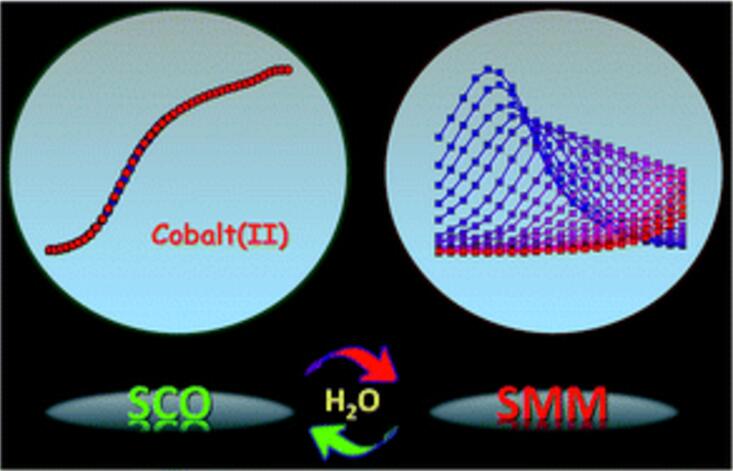
Spin crossover and single-molecule magnet behaviors via a crystal-to-crystal transformation
(Chem. Sci.2018, DOI: 10.1039/c8sc02774a)
Background
Dynamic molecule materials with tunable physical properties have attracted great attention for their potential applications as switches and sensors. One of the most appealing strategies is the modification of coordination environment of the metal center through reversible solid state transformation, especially in a single-crystal-to-single-crystal (SCSC) fashion. In molecular magnetic materials, this transformation leads to the tuning of a variety of magnetic properties, such as magnetic ordering, spin crossover (SCO), and single-molecule magnetism (SMM). In particular,reversible on-off switching of both SCO and SMM behaviors in one single material triggered by a SCSC transformation remains a major challenge.
What we discover?
We demonstrate an unprecedented on-off switching of both SCO and SMM behaviors triggered by a reversible SCSC transformation between a mononuclear CoIIcomplex [CoII(L)2](DPAS)2•DMF•2H2O (1) and its dehydrated form [CoII(L)2](DPAS)2•DMF (2,L = 4'-(4-Bromophenyl)-2,2':6',2''-terpyridine; DPAS-= 4-(phenylamino)benzene-esulfonate).
Why is this important?
It is very difficult to dynamically tune the magnetic anisotropy of the metal center, few dynamic SMM materials with switchable properties, especially complete on–off switching, have been documented. This work provides an effective strategy to achieve multi-switchable materials involving both SCO and SMM properties.
Why did they need WHMFC?
To characterize magnetic anisotropy of the Co(II) center, high-frequency and high-filed electron paramagnetic resonance (HF-EPR) experiments were performed on1and2at 2 K.Simulations to the data with anS= 1/2 spin Hamiltonian affordgx= 2.22(2),gy= 2.16 (2), andgz= 2.04(5) for1. As for2, a least-square fit on the entire array of HF-EPR resonances extracted at various microwave frequencies gives the best-fit parameters ofgx= 2.25(2),gy= 2.25(2),gz= 2.59(5),D=-75.1(8) cm-1, andE= 23.32(3) cm-1. The results clearly reflect the easy-axis anisotropy of2.
Who did the research?
Dong Shao,[a]Le Shi,[a]Lei Yin,[b]Zhen-Xing Wang,*[b]Yi-Quan Zhang,*[c]and Xin-Yi Wang*[a]
[a]State Key Laboratory of Coordination Chemistry, Collaborative Innovation Centre of Advanced Microstructures, School of Chemistry and Chemical Engineering, Nanjing University, Nanjing, 210023, China.
[b] Wuhan National High Magnetic Field Center, Huazhong University of Scienceand Technology, Wuhan 430074, China.
[c]Jiangsu Key Laboratory for NSLSCS, School of Physical Science and Technology, Nanjing Normal University, Nanjing, 210023, China.
